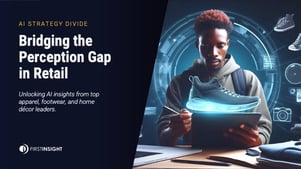Amazon has owned the ecommerce space for so long that it’s been hard to imagine a serious challenger, but that’s been changing in the past year. The pace of change quickened recently with Walmart’s relaunch of its shopping portal to make it simpler, cleaner, and to feature more relevant seasonal merchandise — in other words, more like Amazon.
Alongside a long list of tech companies, both retailers have announced layoffs, but with very different motivations. Amazon is hunkering down. Beginning last fall, the company reportedly shed some 18,000 workers, with another 9,000 job cuts reported last month. The company has canceled, closed, or delayed nearly 100 facilities in the US. It has been walking back an ambitious bricks-and-mortar retail juggernaut, most recently announcing the closing of eight of its 29 Amazon Go food stores.Although Amazon’s ecommerce business for the holiday period exceeded expectations, it contributed to the worst annual loss in its history. In the fourth quarter of 2022, ecommerce sales fell 2% from 2021, and full-year ecommerce sales fell 0.3%.
Walmart also announced layoffs, but only 2,000 positions at five of its e-commerce fulfillment centers. That’s out of more than 1.6 million total employees in the US. The reason given: automation. Walmart is doubling down on logistics technology, which is creating opportunities to cut overhead. And its retail footprint has given it a big advantage with programs like click-and-collect and last-mile fulfillment. A true competitive advantage.
While Amazon seems to be shrinking, Walmart’s online sales in the U.S. rose by 17% year over year in the most recent holiday quarter and 12% year over year for the past full fiscal year. Amazon still dominates the ecommerce business in revenue: roughly $750 billion versus $80 for Walmart. But Amazon’s retail business is by all accounts barely profitable, with the company dependent on its cloud computing division for almost all the firm’s earnings.
After all the disruptions of the pandemic, and all the technological shifts that have taken place in recent years, physical stores are still very much what Americans think of when they think of shopping. According to a CNN report, the crash of Bed Bath & Beyondand the closing of 400 or so stores is far from a calamity for shopping center landlords. No sooner does BBBY clear out of its locations than chains like TJ Maxx, HomeGoods, and Ross swoop in to fill them.
According to the report, Bed Bath & Beyond’s real estate “is a precious, scarce resource for retailers, gyms, and anyone else who needs ample space. There’s been little new retail development since the 2008 financial crisis and the rise of online shopping, and vacancy rates are at historic lows.”
At this juncture, it appears stores have the competitive advantage, and Walmart is in an enviable spot.

















